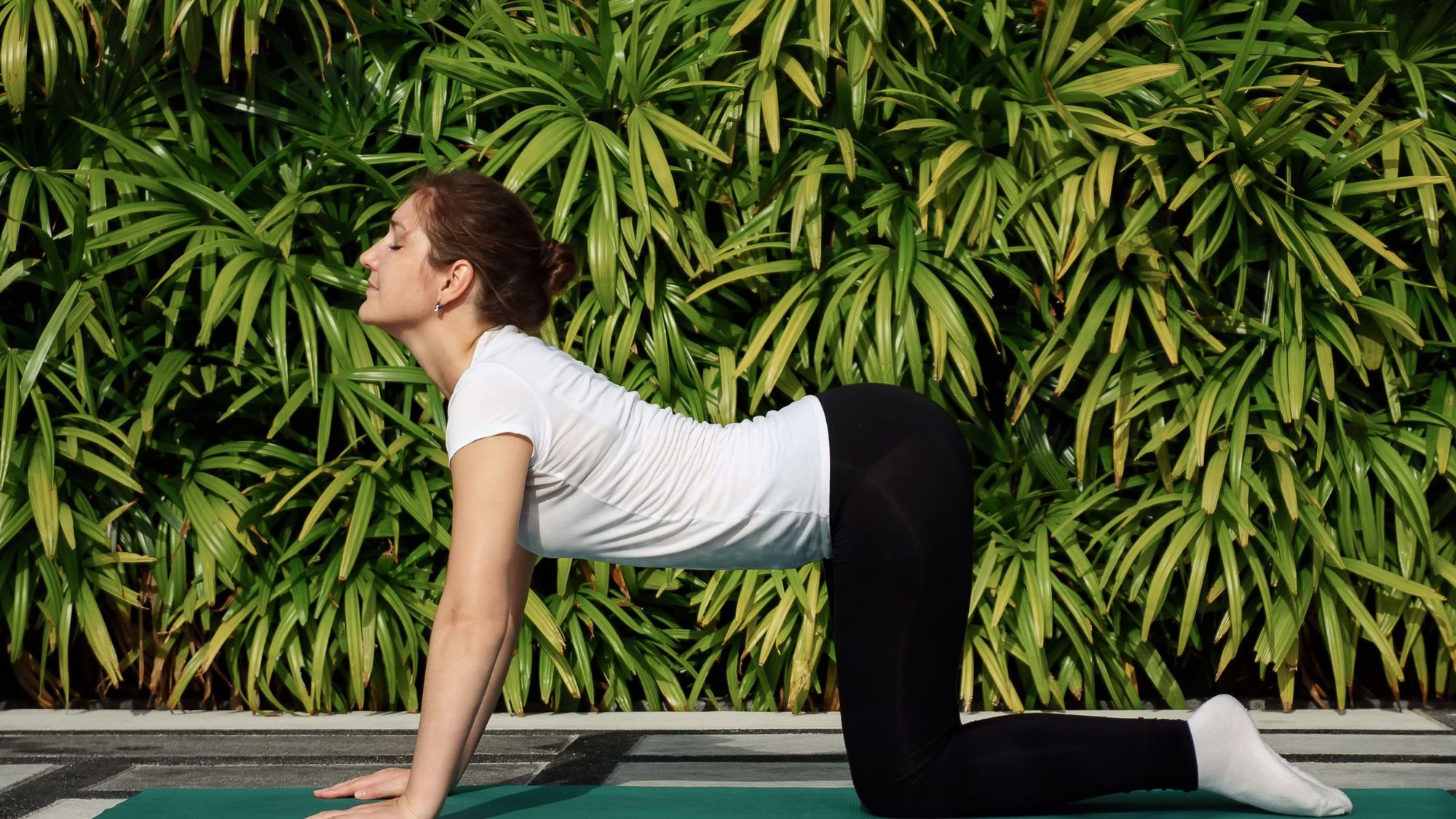
It’s important to do hourly stretches when you work remotely or have a sedentary job, so we have some stretching tips for you. Stretching is one of the best ways to prevent back, neck and body pains, get some movement and healthy blood flow, and maintain good posture while working.
They say, sitting is the new smoking for a reason. When you’re sedentary all day, it can lead to cramped muscles, poor posture, ‘text neck’, an increased risk of varicose veins, and body pains because you’re not moving. This is why it’s so important to set reminders on your phone to do some stretches every hour or so while you’re working remotely, or take a break to go for a walk.
You don’t have to do heavy exercise when you take a break, but a few gentle stretches can make a world of difference when done regularly as a remote worker. In this guide, we’ll help you keep your body happy while you work from home. With these 9 stretches and stretching tips, you’ll be doing your body a huge favor.
Why are Stretching Breaks Important?
Movement breaks are essential when you’re working remotely. When you are working a sedentary job, it’s important to get up and stretch every hour if you can, for around 5 – 10 minutes. These stretching tips aren’t just there to make your workday easier; they are also important for your overall health.
Studies have shown that stretching is important for keeping the muscles limber – meaning that they are flexible and healthy enough to perform properly with good range of motion. When they are in the same position for too long and not used, they are unable to expand to their full potential, which makes them tight and can cause stiffness and pain when they are used.
Furthermore, a stretching break at work can help improve your posture or correct it, and relieve tension in your muscles and joints. It also means that you get a quick break from your work, giving your mind the break it needs so that it can refresh and return to work feeling new.
You’ll get more blood flow to your brain when you stretch, so you’ll reconvene your work with more metal alertness as well.
9 Stretching Tips for Remote Workers
Start your day with some of these morning stretches, and then begin your work. Instead of just sitting down and working all day, you can go through these 9 simple stretching tips every hour, which make life easier and healthier for remote workers.

1. Overhead Reach
Stretching tips that focus on the back and arm muscles are important because of the strain they can put on your body when working at a desk all day. You can perform this exercise seated, and it will help relieve some of the tension that has built up.
Raise one arm towards the ceiling before gently reaching towards the opposite side. Your arm should be over your head, and you will feel the stretch in it. Hold the position for up to 30 seconds and then slowly return to your starting position before switching to the opposite side.

2. Inner Thigh Stretch
If you want stretching tips that focus on the inner thighs, hips, and groin, this is perfect. You can even stay seated for this one (which makes it a great way to end stretching). While you’re seated, spread your legs wide and keep your toes pointing outwards. Straighten your back and contract your abs as you lean forward and place your elbows on your thighs.
Gently press into your thighs until you can feel a stretching sensation in your inner thigh, which is when you hold it for 10-30 seconds. You can then repeat it a few times.

3. Cat-Cow Stretch
This is one of those stretching tips that will get you out of your chair and fully on the ground – which is great if you need to release some tension. While it is a yoga position, it can be a really beneficial stretch to do on your break.
While on your hands and knees (on all fours), push your rear out so that it is in the air, push your chest forward, and raise your head towards the ceiling. Hold this for around ten seconds before gently lowering your rear, bringing your chest in, and returning your head downwards.

4. Torso Stretch
For stretching tips that help with your posture, this is one of the best. It’s normal to be hunched when you’re working at a desk, and the torso stretch is great for your spine and the muscles in your back, arms, and sides. With this stretch, you can sit down or stand – it’s whatever you are most comfortable with.
Intertwine your fingers and lift them towards the ceiling, stretching your arms as you do so. While you are stretching, inhale deeply – exhaling as you open your arms and release the stretch slowly. Bring them back down in a sweeping motion, and repeat up to ten times.

5. Shoulder Shrug
Even when you’re working at a desk your neck and shoulder muscles can hold a great deal of tension. Not only that, your body tends to hunch naturally when you’re bent over a keyboard all day. This stretch can help to alleviate that. You can stand or stay seated for this stretch, and all you need to do is lift your shoulders until they reach your ears.
Squeeze your shoulders as hard as you can, then hold them for a few seconds before you roll them back and start to relax. Repeat up to ten times, and then roll your shoulders forward to end the stretch.

6. Full Spine Stretch
This is another one of those stretching tips that will get you out of your chair and focusing on your whole body. Since your back often suffers the most at a remote desk job, it’s really important to ensure it’s being cared for.
Get down to your knees, using your chair to rest your elbows on. Taking it slowly and gently, kneel down so that you are on your heels and then let your head dip down beside your elbows. Breath deeply as you go down, holding the position for up to 20 seconds before exhaling and releasing. You can then repeat the stretch several times.

8. Hamstring
Our legs don’t get much use when we are sitting still all day, and it can lead to the muscles becoming sore and tense. This exercise is done seated, but it is important that you do it one leg at a time. It’s tempting to do both, but doing so can cause back issues in the future.
While in your chair, extend one leg and slowly reach towards your toes with both hands. Hold the position for up to 30 seconds, feeling the stretch in your legs, and then gently release. Switch to the other leg and repeat, doing so up to ten times.

9. Neck Stretches
When you’re working at your desk all day, it’s only natural that you will hold a great deal of tension in your neck and head.
Most people look downwards at their keyboard or screen while they work remotely, because most people don’t have a proper ergonomic workstation with a raised monitor. This causes neck pain due to the downward position which puts over 40 pounds of pressure on your neck, often referred to as ‘text neck’. This can lead to headaches, muscle knots, and tension in the spine and back muscles.
You’ll therefore need to do some neck stretches every hour or so. You don’t need to stand up for this stretch; you can just stay seated.
Reach your hand down to the left-hand side of the seated part of your chair and grasp it in your left hand. While doing this, tilt your head to the right until you start to feel a stretching sensation in your neck. Hold this for ten seconds, and then switch to the other side. Once completed, sit up straight and gently roll your neck to one side, holding for ten seconds, switch to the other side, and repeat up to ten times. You can also check YouTube for some guided tutorials and stretching tips specifically for the neck.
To Conclude
As you can see, these stretching tips are easy to follow and will have your body feeling better and invigorated for a more productive work day. Sitting still all day is not good for your physical or mental health, and it’s not going to be detrimental to your work day if you take five minutes every hour to stretch – it will actually be beneficial. You won’t ‘lose time’ with stretching breaks, but rather gain productivity as it improves your mental alertness.
While you’re here, why not find out more about your health and body by taking a DNA test from CircleDNA? Not only will it give you fantastic insight into the optimal diet and exercise plan for your body composition, but it can also help you figure out any health conditions you might be genetically at risk of, so that you can take preventative measures.
References:
- The importance of stretching – Harvard Health. Harvard Health. Published August 19, 2013. Accessed January 21, 2023. https://www.health.harvard.edu/staying-healthy/the-importance-of-stretching
- pt Health. pt Health. Published February 12, 2019. Accessed January 21, 2023. https://www.pthealth.ca/blog/why-taking-a-stretch-break-at-work-is-so-important/
